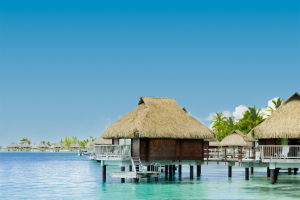Minya Konka, an often-overlooked peak in Sichuan, China, hides a tragic history.
This is the story of the ill-fated 1982 Japanese expedition, one of many that faced disaster on its steep, avalanche-prone slopes.
While not as famous as other giants, Minya Konka ranks as the world’s 66th highest mountain but carries a higher mortality rate than K2, Annapurna, and Nanga Parbat.
Minya Konka and the Daxue Range
Minya Konka is part of the Daxue Range, located in the Hengduan Mountain region along the eastern edge of the Tibetan Plateau. The Daxue Range, marked in red on the map, spans about 50 km from north to south and features around 25 peaks over 6,000 meters.
These include Leudomanyin (6,112m), Langemanyin (6,294m), Daduomanyin (6,380m), Riwuqie Feng (6,376m), Tai Shan (6,468m), Jiazi Feng (6,540m), and Zhongshan Feng (6,886m).
The Minya Konka massif is home to the highest peak, Minya Konka itself, located in the southern part of the range. With a prominent vertical relief of over 3,600 meters, Minya Konka is known as the King of Sichuan Mountains and is the easternmost 7,000-meter peak in the world.
It stands as the third highest mountain outside the Himalayas/Karakoram, following Tirich Mir and Kongur Tagh.
The mountain has several names: Gongga Shan, Minya Gonkar, Kunka, or Bokunka, as named by 19th-century explorers.
How High Is It?
Minya Konka was first described by British explorer William John Gill in 1876. A few years later, Hungarian traveler Bela Szecheny estimated the peak to be 7,600 meters. In 1929, Austrian-American explorer Joseph Franz Karl Rock wildly claimed it was 9,220 meters, surpassing Everest.
This estimate was “confirmed” by Theodore Roosevelt’s sons, who had visited the region in 1928 while hunting giant pandas.
Rock later revised his figure to 7,803 meters, and in 1930, a Swiss geographer lowered it to around 7,590 meters.
The first successful ascent of Minya Konka was in 1932 by Americans Richard Burdsall and Terris Moore, who measured the peak at 7,587 meters. Since then, the height has been adjusted to 7,556 meters, making it the second-highest mountain ever climbed at that time.
Gods, Legends, and Tragedy of Minya Konka
Minya Konka, like Kawagarbo, is deeply woven into local culture and mythology. One legend tells of Dorjelutru, the gods of thunder, who resides atop Minya Konka. He guards the region with the help of a court of spirits.
Another tale speaks of the goddess Youyoutsouma, born from an emerald. She rode a doe, milking the sky with its milk each evening. When an archer killed the doe, Youyoutsouma's fury caused the sky to spill its milk, flooding the land. In revenge, she transformed into a mountain, crushing the archer.
This is why Minya Konka remains hidden in clouds, revealing its emerald and white hues only to those who approach with sincerity.
Minya Konka: A Dangerous Peak
Minya Konka is notorious for its treacherous weather conditions, making access to the peak nearly impossible from the surrounding valleys. It features sheer faces, jagged ridges, seracs, ice walls, cracks, and frequent avalanches.
The mountain has a chilling mortality rate. Since the first ascent in 1932, only 23 to 25 people have successfully climbed it, but over 30 climbers have lost their lives on its slopes.
Catch the Air - Snowboarding in Minya Konka Ranges - Kailas
Video by KAILAS Global


